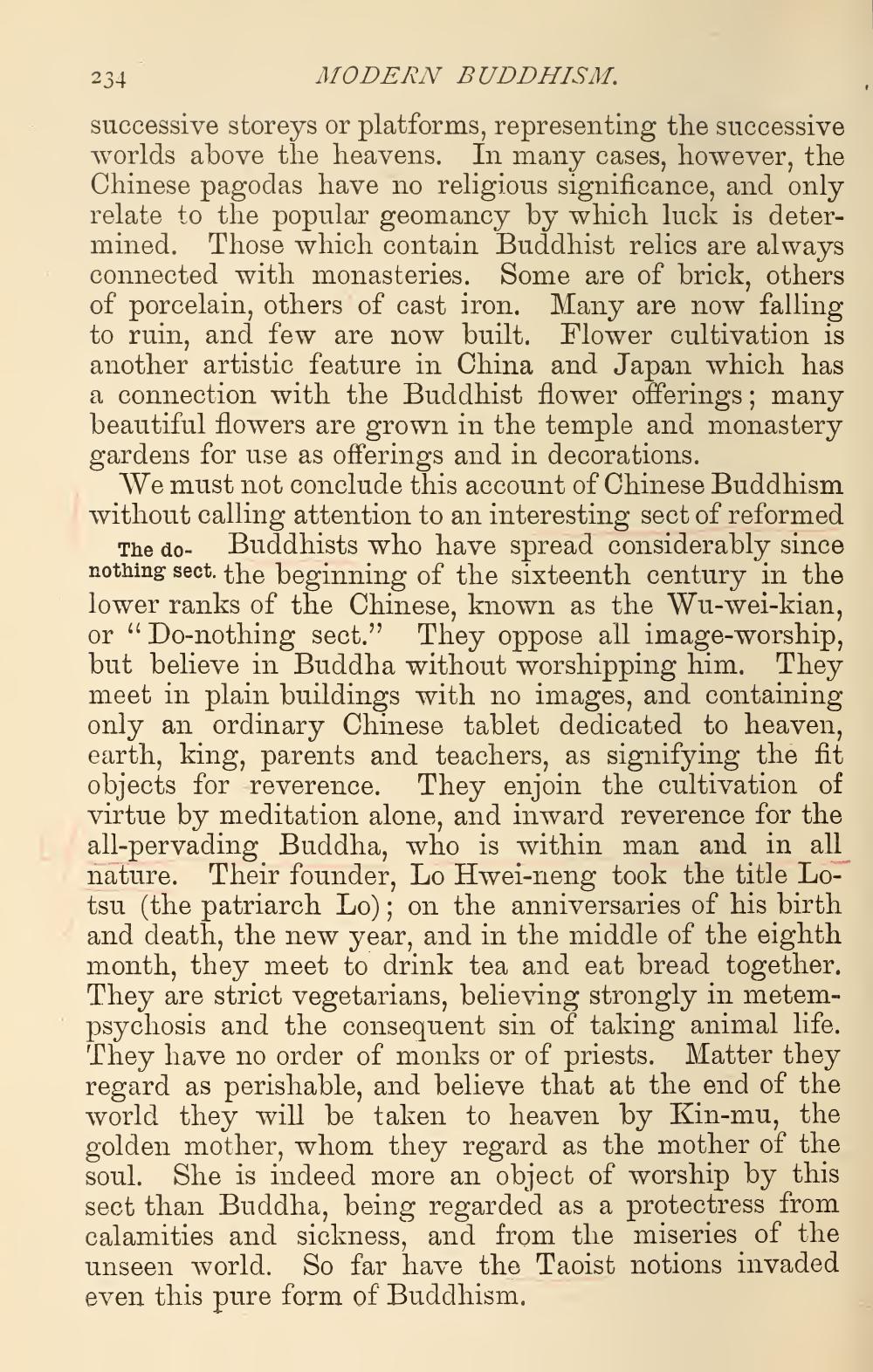________________
234
MODERN BUDDHISM. successive storeys or platforms, representing the successive worlds above the heavens. In many cases, however, the Chinese pagodas have no religious significance, and only relate to the popular geomancy by which luck is determined. Those which contain Buddhist relics are always connected with monasteries. Some are of brick, others of porcelain, others of cast iron. Many are now falling to ruin, and few are now built. Flower cultivation is another artistic feature in China and Japan which has a connection with the Buddhist flower offerings; many beautiful flowers are grown in the temple and monastery gardens for use as offerings and in decorations.
We must not conclude this account of Chinese Buddhism without calling attention to an interesting sect of reformed
The do- Buddhists who have spread considerably since nothing sect. the beginning of the sixteenth century in the lower ranks of the Chinese, known as the Wu-wei-kian, or “Do-nothing sect." They oppose all image-worship, but believe in Buddha without worshipping him. They meet in plain buildings with no images, and containing only an ordinary Chinese tablet dedicated to heaven, earth, king, parents and teachers, as signifying the fit objects for reverence. They enjoin the cultivation of virtue by meditation alone, and inward reverence for the all-pervading Buddha, who is within man and in all nature. Their founder, Lo Hwei-neng took the title Lotsu (the patriarch Lo); on the anniversaries of his birth and death, the new year, and in the middle of the eighth month, they meet to drink tea and eat bread together. They are strict vegetarians, believing strongly in metempsychosis and the consequent sin of taking animal life. They have no order of monks or of priests. Matter they regard as perishable, and believe that at the end of the world they will be taken to heaven by Kin-mu, the golden mother, whom they regard as the mother of the soul. She is indeed more an object of worship by this sect than Buddha, being regarded as a protectress from calamities and sickness, and from the miseries of the unseen world. So far have the Taoist notions invaded even this pure form of Buddhism.




